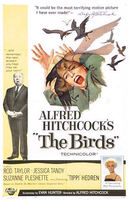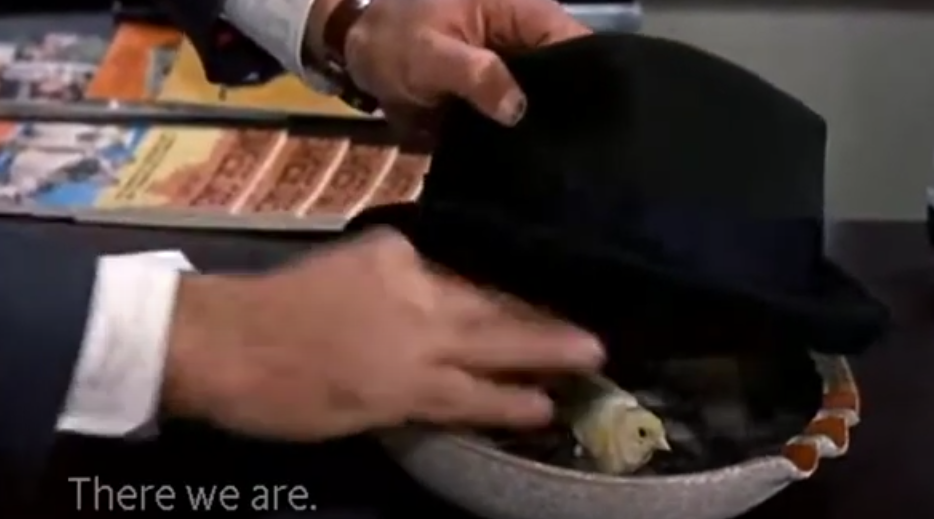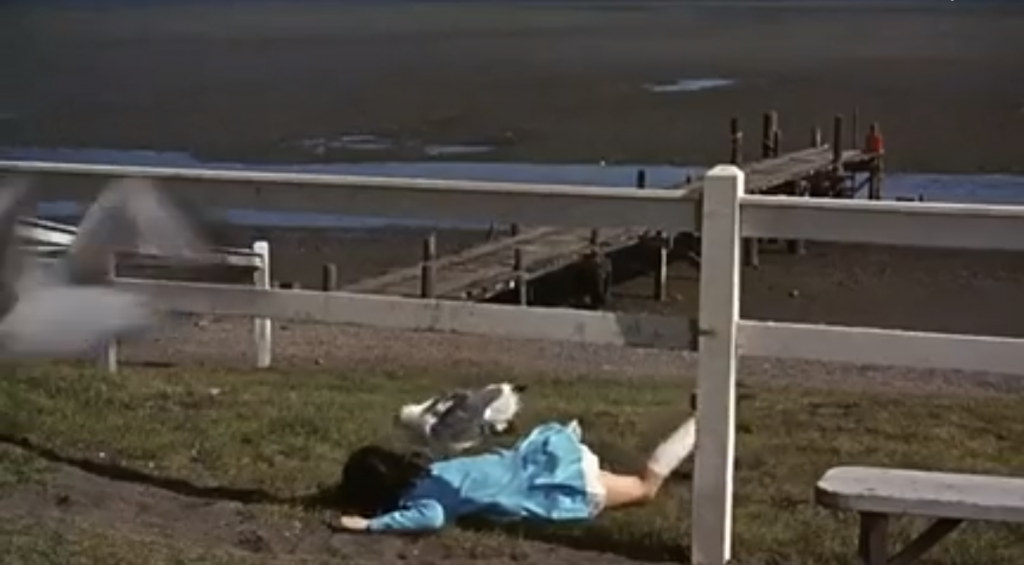
The Birds (1963) is undoubtedly a horror film because it contains a deep sense of the uncanny, a term Freud coins as something that is terrifying because it is familiar.[i] The Birds contains many pockets of fear and gruesome imagery throughout the film. Hitchcock’s use of human bodies being pecked at by birds are an example of the uncanny, as it is the estrangement of the body that is unsettling.
The human and animal relations throughout the film are discussed in various ways. The social setting of the pet shop is an opening to viewing the animals as something that is easily dominated by the humans that run the world around them. The discussion between the characters around the aesthetic qualities of the birds show how reduced they are, to something that is regarded as an item. The ease at which the free bird is caught by the hat shows the confidant dominance of the humans. At no point is it viewed as a chaotic moment, it is calmly handled with no fear.

We see the monstrous force of the birds at the children’s party. This jovial setting initiates an unnerving experience for the audience. A children’s party is an event unique to human culture. For this to be disrupted so quickly and brutally shows the fragility of humanity. This is emphasised by the fact it is daylight. Horror films are often set at night, but Hitchcock’s invasion of daytime space is unsettling because the birds have turned from predictable to unpredictable right in front of us. This is also a burst into horror, rather than built suspense. Hitchcock’s quick camera cuts emphasise sudden and unexpected chaos: a seagull attacks a girl on the bank, then to balloons bursting, then to a child hiding under a table. These rapid camera movements display the party from all perspectives, highlighting that this is an onslaught of trauma. Hitchcock additionally emits music from this scene, creating a highly intense and eerie atmosphere, because all you can hear are the blurred screams of the children and birds. The diegetic sounds are haunting and uncanny because you cannot separate human from animal.
One significant moment of this scene is in a single shot where a seagull pecks at a girl in a blue dress lying face down on the ground (Fig. 2). Hitchcock pauses on this to show a pinnacle moment of the uncanny. The girl has become corpse-like, stiff and barely moving, foreshadowing the later victims of the birds. The way her legs do move is excessively robotic and rigid, giving the animal agency as it can peck at her quite freely. Moreover, the blue dress with its white petticoats looks like an “Alice” dress, symbolising innocence and youth. The girl is not the last person at the scene, yet this bird is pecking at her as if dead, the remnants of a kill. This abject body horror shows how easily animals can create fear when given an unexpected and chilling agency.

| Fig. 2. Girl being pecked at by a seagull creates an uncanny feeling |
In this medium shot, the little girl is lying just outside of the fence, representative of a position just outside of society. She is centred in the foreground with the sea in the background, serving as an eminent reminder of their seclusion. Additionally, other seagulls fly across the shot. This constant assault displays the difficulty of containing evil, hence why it is set outside, in an open space that is now vulnerable for humans. The scene concludes with the remnants of the party, the food left untouched. This signifies this attack was specifically directed towards the humans. It is the combination of the vulnerability of humanity and the agency of the animals that gives this film an uncanny quality.
[i]Sigmund Freud, The Uncanny <http://web.mit.edu/allanmc/www/freud1.pdf> [accessed 4th January 2016]